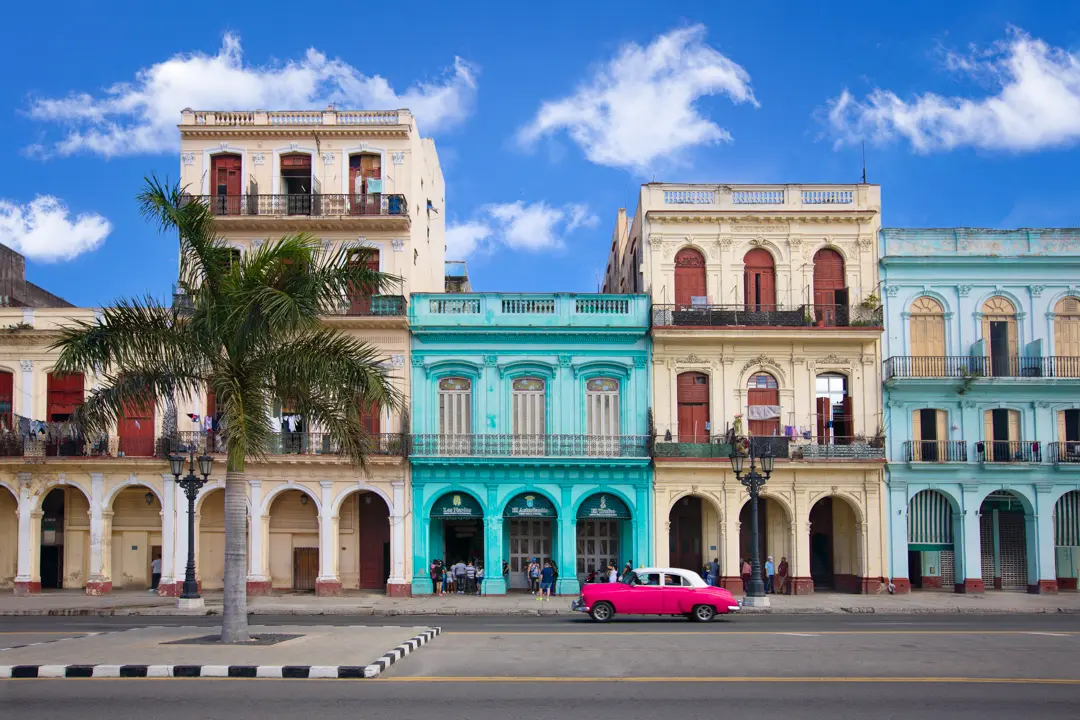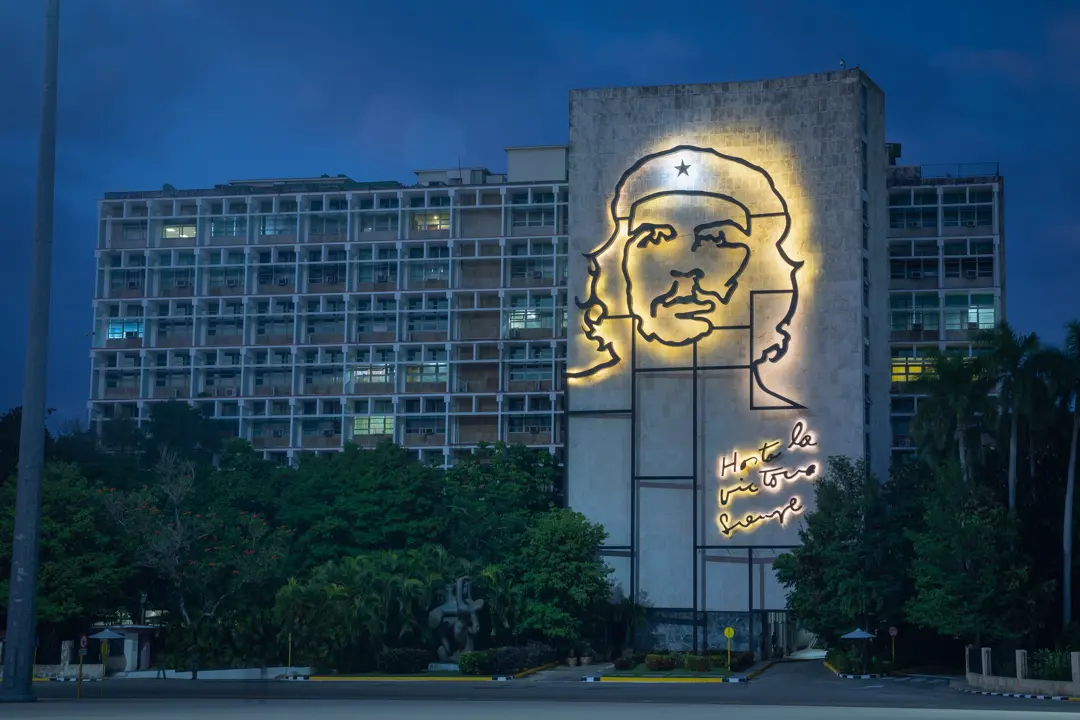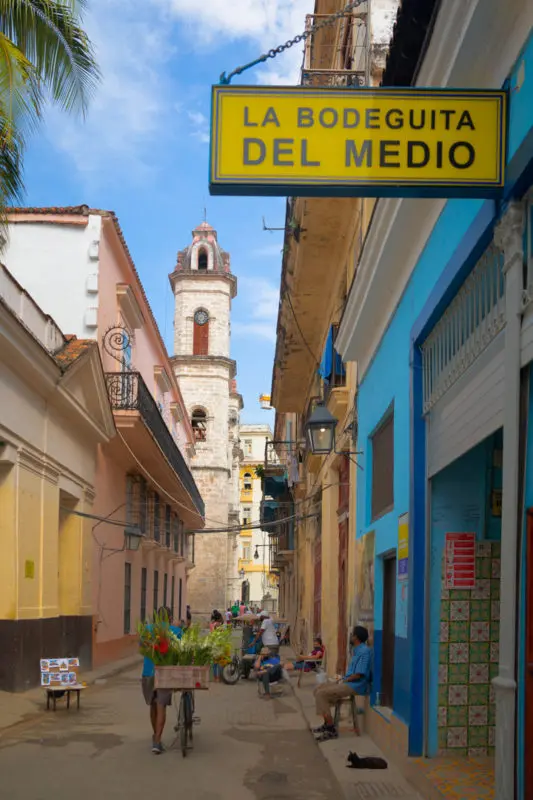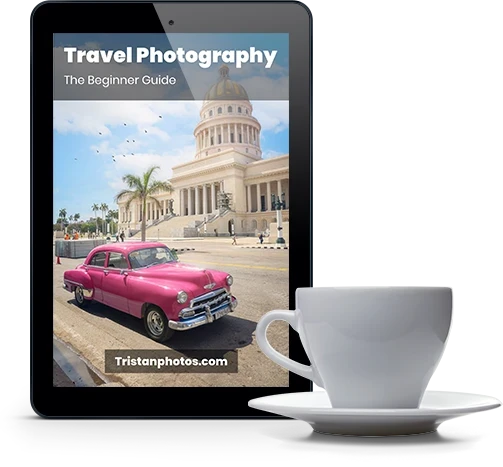
Havana is a little marvel that you will love to discover. Between mythical cars, omnipresent music and dance, rich architecture full of history, and welcoming people, you won’t know where to start. To give you some inspiration to for your next trip, here a selection of my very best pictures. Let’s dive in !
Photo of Havana n°1: Paseo del Prado
This is one of the busiest avenues in Havana: the Paseo de Martí, also called Paseo del Prado, is 1 km long and, like the Malecon, it is never empty. Starting from the Fortress San Salvador de la Punta, this beautiful paved and shady avenue brings together locals, tourists and street vendors.

Photo of Havana n°2: Plaza de la Revolución
1 million is the number of people that the Plaza de la Revolución can accommodate. On festive days, such as July 26th, the day of the Cuban Revolution, the people of Havana gather in this square to commemorate important events. The plaza itself is quite unremarkable, but don’t miss the two huge portraits (hard to miss!) of Che Guevara and Camilo Cienfuegos, illuminated at night.

Photo of Havana n°3: Habaneras in Plaza Vieja
The “Plaza Vieja” is a must-see in Old Havana. It is a beautifully renovated square with eclectic architecture and several restaurants and cafes. It is full of terraces and restaurants, as well as strange sculptures and a very striking fountain In and around the square there are several nice stops: the microbrewery La Factoria, the rum museum, the chocolate museum, the pharmacy museum…

Photo of Havana n°4: Plaza de la Catedral
Surrounded by buildings of great value: the old public baths, the Palace of the Marquises of Aguas Claras, particularly beautiful, the house of Lombillo, currently the Museum of Education, the house of the Marquis of Arcos, considered the best colonial mansion in Havana and the Museum of Colonial Art, known for its collection of stained glass windows, in which the life and customs of Cuban colonial life are represented.

Photo of Havana n°5: El Capitolio
El Capitolio is another unmissable monument, located on a very busy avenue that can be seen from afar. Built on the model of the Capitol of Washington, it was once the seat of the Cuban government and now houses the Academy of Sciences. Very photogenic, this building can be found on a large number of postcards of the country.

Photo of Havana n°6: Bodeguita del Medio
La Bodeguita del Medio It is famous for its mojito, Hemingway has already written on the walls, “My mojito in the Bodeguita, my Daiquiri in La Floridita”. Full of pictures and walls written in pen remembering who has been there, it is the trace of the past and present. Ernest Hemingway, Pablo Neruda or Nicolás Guillén passed by this little winery.

Photo of Havana n°7: American Cars
They are the predominant cars, Americans from the time of Batista’s dictatorship. Now many are completely rebuilt, with a brightness that gives light to the streets of Havana.

Photo of Havana n°8: Picture of Havana n° Hotel Inglaterra
Together with the National Ballet of Cuba, it stands out for its cleanliness and architecture. It stands out even more next to the rest of the buildings.
It’s probably one of the most expensive hotels in the city along with the Hotel Nacional or the Habana Libre in Vedado.

Photo of Havana n°9: El Floridita
If you just want to check it out, you could simply opt for a Daiquiri at the bar. It is impossible to omit the address: in the 1930s and 1940s, a plethora of artists followed one another there. It was Hemingway’s favorite for place to take daiquirís. A statue pays homage to the writer.

Photo of Havana n°10: Gran Teatro
It is perhaps the most spectacular building in the city, in the neo-baroque style, full of stone statues. It was opened in 1834, almost two hundred years later it dazzles the beginning of the Paseo del Prado.

Photo of Havana n°11: Portrait of a Cuban Habanero

Photo of Havana n°12: Carnaval de La Habana
The carnival introduced by the Spaniards has established itself as a popular national holiday. Integrating African traditions, both in music and dance, it is today one of the central elements of Cuban cultural identity.
Between 15 July and 15 August, the Malecón of Havana vibrates every weekend to the rhythm of music, dances and float parades. The comparsas (large popular troupes) are having a blast. The public, installed on bleachers or standing along the avenues, enjoy the show.
Once the parade is over, the spectators take their turn on the avenues.
Beer and rum are flowing, so many generous stimulants for good humour!

Photo of Havana n°13: Callejón de Hamel
This unique street is the lair of a population full of hope, half artist and half hippie. Always crowded on sundays, this street has become an obligatory passage for tourists, but is mostly frequented by the locals, who sing and dance there until dawn, or sit down for a drink on the terrace to remake the world.

Photo of Havana n°14: Parque Central
The Central Park of Havana is a wooded space, conceived as a public square, a place for recreation and leisure. In its center is the first statue of José Martí that was erected in Cuba.
Located in the margins of the historical center of the Cuban capital, in the area of Old Havana, surrounded by the streets Paseo de Martí, Agramonte, Neptuno and San José, since its creation it has always been a meeting place for the residents of the city.

Photo of Havana n°15: Hotel Internacional

Photo of Havana n°16: El Malecón de la Habana
The Malecón, a mythical promenade along the sea, is one of the must-see places in Havana. 8 km long, the seafront stretches to the north of the city and connects old Havana with the Miramar district. No matter what time of day or season, the Malecon is always lively.

Photo of Havana n°17: Paseo del Prado
This is one of the busiest avenues in Havana: the Paseo de Martí, also called Paseo del Prado, is 1 km long and, like the Malecon, it is never empty.
Starting from the Fortress San Salvador de la Punta, this beautiful paved and shady avenue brings together locals, tourists and street vendors. Its central promenade, full of vigilant lion sculptures, allows you to look to both sides and enjoy some incredible, impressive buildings.

Are you planning to travel to Cuba? If so, I invite you to take a look at my next photo tour to Cuba. The recipe is simple: Lots of beautiful encounters, salsa, architecture, American cars and a few mojitos to keep in shape!
And if you like what you see here, or have any question, please leave a comment below !

